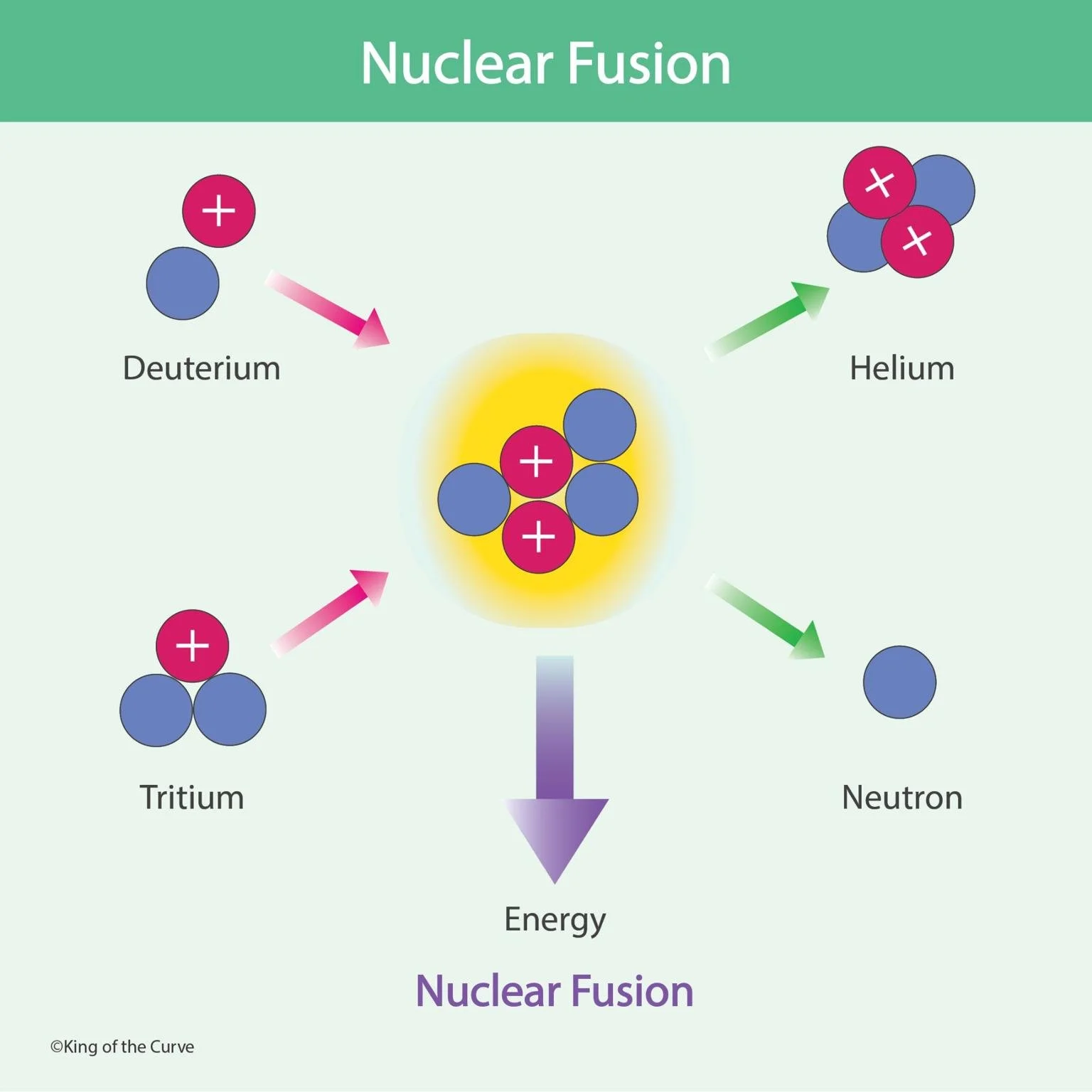🔬 Nuclear Fusion: Powering the Universe
Nuclear fusion is the process that powers stars, including our Sun. It occurs when two light atomic nuclei combine to form a heavier nucleus, releasing an enormous amount of energy. This process transforms hydrogen isotopes into helium and drives the radiance of the cosmos.
☀️ How Fusion Works in the Sun and Beyond
In stars like the Sun, fusion happens naturally because gravitational forces generate incredible pressure and temperatures of over 15 million °C. Under these conditions, hydrogen isotopes — deuterium and tritium — collide, forming helium and releasing neutrons and energy in the process:
Deuterium (¹H²) + Tritium (¹H³) → Helium (²He⁴) + Neutron (¹n⁰) + Energy
This reaction releases 17.6 MeV of energy, proving how a minuscule mass can yield colossal energy output. It’s this same principle that scientists hope to harness through experimental reactors like ITER and NIF, paving the way for limitless clean power.
⚙️ Challenges in Creating Controlled Fusion
Recreating fusion on Earth is incredibly complex. Unlike the Sun, where gravity does the job, we must rely on magnetic confinement (tokamaks) or inertial confinement (laser fusion) to hold and compress plasma hotter than the surface of the Sun. Maintaining these extreme conditions long enough for fusion to occur — and produce net-positive energy — is one of science’s greatest engineering feats.
Researchers continue to experiment with plasma control, superconducting magnets, and advanced materials that can withstand the intense radiation of fusion reactions. Each breakthrough brings us closer to a future powered by fusion — a future with minimal waste, no carbon emissions, and virtually infinite fuel from hydrogen in seawater.
🌍 The Promise of Fusion Energy
Fusion energy has the potential to redefine global energy systems. It produces no greenhouse gases, creates negligible radioactive waste, and uses fuel sources abundant in nature. When commercialized, fusion could end our reliance on fossil fuels and usher in a new age of sustainable, high-output energy production.
Global collaborations such as ITER in France and private companies like Helion Energy and Commonwealth Fusion Systems are driving innovation at unprecedented speeds. With continued investment, fusion could become the cornerstone of 21st-century energy — providing clean power for industries, transportation, and even space travel.
⚛️ Table: Key Components of Nuclear Fusion
| Particle | Description | Role in Fusion |
|---|---|---|
| Deuterium | Hydrogen isotope with one proton and one neutron | Combines with tritium to start fusion |
| Tritium | Hydrogen isotope with one proton and two neutrons | Reacts with deuterium to form helium |
| Helium | Product of the fusion reaction | Stable nucleus formed after fusion |
| Neutron | Neutral particle released during reaction | Carries away most of the energy |
| Energy | Released as kinetic and radiant energy | Powers stars and future reactors |
🚀 A Step Toward the Future
Fusion energy isn’t just a dream — it’s a developing reality. Scientists are continuously optimizing plasma stability, magnet design, and computational models to predict fusion behavior with greater accuracy. The fusion race is a global effort that unites physicists, engineers, and innovators across disciplines.
As technology advances, the vision of replicating the power of the stars on Earth draws nearer. Nuclear fusion stands as both a scientific marvel and a beacon of hope — one that could illuminate humanity’s path to a sustainable, energy-rich future.
Frequently Asked Questions (FAQs)
-
Aim for 4-6 focused hours, ensuring you incorporate breaks to avoid burnout.
-
Practice mindfulness techniques, take practice exams under realistic conditions, and maintain a balanced lifestyle.
-
Set short-term goals, seek support from mentors, and reward yourself for small achievements.
-
Regular exercise improves focus, reduces stress, and enhances overall mental clarity.
-
KOTC offers personalized learning tools, gamification features, and adaptive question banks to help students stay on track without burnout.


